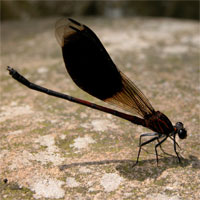We have moved to a new server!
Since March 2014, this website has been moved to this new server: http://web.ntnu.edu.tw/~treehopper/. This page will not be updated anymore. Please update your browser’s bookmark or the web links.
Member list
Current members
- Jo-Fan Wang
- Hung-Nien Chen
- 1. The effect of typhoon on survivalship of Matrona cyanoptera. 2. Modes of phenotypic variation in Euphaea amphicyana.
- Lan-Wai Yeh
- Ecology and evolution of Taiwanese Carabus ground beetles.
- Yun-Chieh Cheng
- What do damselfly larvae eat? DNA barcode analyses of larval diet in Matrona cyanoptera and Euphaea formosa.
- Chung-Hsin Huang
- Flucuating Asymmetry and Developmental Asymmetry of Cyclommatus mniszechi.
- Hui-Yun Tseng
- 1. Biological function of coloration in Pachyrrhynchus tobafolius. 2. Phylogeny and color evolution of Pachyrrhynchus weevils. 3. Population genetics of Pachyrrhynchus weevils on Lanyu and Green Island.
- I-Ting Hsiao
- Variation of genitalia in Euphaea amphicyana.
- Yen-Ting Chen
- The effect of forest management of Mt. Da-Shiue on the morphological variation of a ground beetle, Carabus (Apotomopterus) masuzoi.
- Jyun-Huei Huang
- The fighting behavior of a stag beetle, Rhaetulus crenatus.
- Shi-Ting Wu
- Membracis Phyllotropis.
- Chiao-Wei Lin
- The fighting behavior of a stag beetle, Rhaetulus crenatus.
- Yong-Chao Su
- Behavioral ecology, sociobiology, population genetics, and molecular phylogenetics.
Past members
- Wei-Liang Xiao
- Variation of wing veins in Euphaea amphicyana.
- Li-Wen Weng
- Why do firefly larvae emit light?
- Yat-Hung Lee
- Speciation of Euphaea damselflies.
- Che-Yu Kuan
- Variation of mandibles in stag beetles.
- Chu-Yen Cheng
- Phylogeography of a Philippine's treehopper, Leptocentrus reponens.
- Ming-Yu Chen
- Phylogeography and population history of the treehoppers, Centrochares horifficus from the Philippines Archipelago.
- Shao-Chang Huang
- Visual Communication of Matrona cyanoptera
- Jen-Pan Huang
- Population Genetics and Phylogeographic Analyses of Formosan Damselfly, Euphaea Formosa (Insecta: Odonata: Euphaeidae) from Taiwan
- Wei-Yun Chen
- Molecular and Phylogenetic Characterization of Endosymbiotic Bacteria of the Froghopper, Okiscarta uchidae (Insecta: Hemiptera: Cercopidae)
Visiting scholars and students
- Vanitha Williams
- Predatory potential of waterbug, Diplonychus rusticus and dragonfly, Diplacodes trivialis on mosquito larvae.
- Marina Vilenica
- Dragonfly composition (Insecta, Odonata) in wetland area of Turopolje region, Croatia
- Klaas-Douwe 'KD' B. Dijkstra
- History, diversity and identification of dragonflies and damselflies (Odonata).
- Erin McCullough
- " Diversification of weapon form: aerodynamic costs of beetle horns.
- Ashley E. King
- Intrasexual combat and intersexual antagonistic co-evolution in horned beetles.
Jo-Fan Wang

Title
Master Student 2006-2010, Research Assistant 2010
Species: Euphaea formosa

Project
1. The Territorial Behavior of Euphaea formosa (Odonata). 2. Tempo and Mode of Pronotal Evolution in Membracis Treehoppers.
Abstrct
E-mail:genomicrna@hotmail.com
1. Factors affecting outcomes of territorial contests in the Formosan Damselflies, Euphaea formosa
Euphaea formosa (Odonata: Zygoptera: Euphaeidae) is an endemic damselfly species with wide distribution in streams of Taiwan. In this study, the first aim is to describe in details of territorial behavior in this species. We conducted behavioral observations between July and September 2006 and 2007 in Wu Chen River, near Lian Hwa Chih of central Taiwan. The results indicates that the frequency of territorial fights was at peak around 09:00-12:00 and positively correlated with temperature. There are four distinct behavioral stages in a typical male-male encounter: aggression, hover, chase, and flight in 8-shape. Our second aim is to investigate what factors affect the outcome of a territorial contest. The results indicate that residents of a territory win significantly more fights than intruders. Body size, wing area, percentage of pigmentation on hindwings, body fat, and flight muscle ratios were not significantly different between winners and losers.
2. The Tempo and Mode of Pronotal Evolution in Membracis Treehoppers
Cope’s rule refers to a phyletic trend of increase in body size over geological time. Despite the rule has been proposed more than a century ago, its validity is still controversial. Treehoppers in the Neotropical genus, Membracis (Insecta: Membracidae) have an enlarged, laterally flattened pronotum which is an ideal trait for studying character evolution. Our preliminary results showed that phylogenetic history has a minimal effect on pronotal shape. Evolution of pronotal shape was directly proportional to tree branch lengths, and the mode of pronotal evolution is gradual. Our current view of how pronota evolved needs further revisions with additional data.